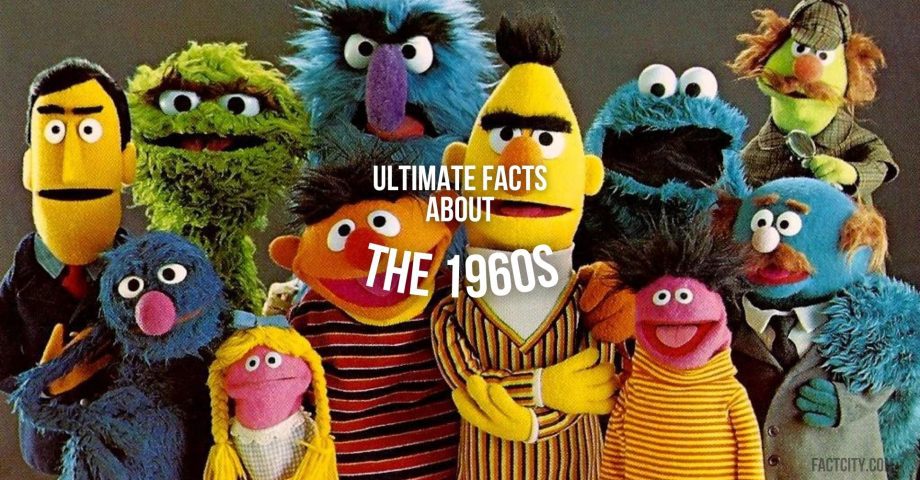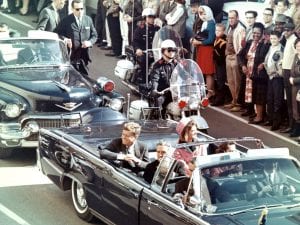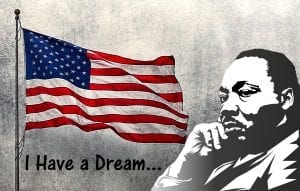No better song describes the 1960s as Bob Dylan’s “The times they are a-changing”:
“Come gather ’round, people
Wherever you roam
And admit that the waters
Around you have grown
And accept it that soon
You’ll be drenched to the bone
If your time to you is worth savin’
And you better start swimmin’
Or you’ll sink like a stone
For the times they are a-changin’…”
While listening to the song about the decade of change, here are some interesting facts about the 1960s that you might enjoy…
1. JFK became US President.
Democrat John F. Kennedy won the US Presidential Election after defeating Republican Richard Nixon.
JFK remained President of the United States of America until his assassination on November 22nd, 1963.
2. Many African nations seceded from European control.
Togo, Chad, Côte D’Ivoire, Benin, Senegal, Mauritania, and the Central African Republic gained independence from France.
Togo had been under French rule since 1916, Côte d’Ivoire since the 1880s, Chad since 1900, Benin since 1872, Mauritania since 1903, Senegal since 1659, and the Central African Republic since the late 19th century!
3. Oil became even bigger business.
The Organization of Petroleum Exporting Countries (OPEC) was created.
Today, the member countries of the organization include the Islamic Republic of Iran, Kuwait, Iraq, Saudi Arabia, and Venezuela (the five founding members), Qatar, Indonesia, Libya, the United Arab Emirates, Algeria, Nigeria, Ecuador, Gabon, Angola, Equatorial Guinea, and Congo.
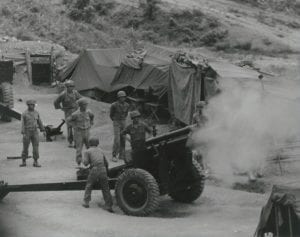
4. It was the decade of the Vietnam War.
The United States decided to send 3,500 US troops to Vietnam as conflict broke out between the north and south.
The war would go on until 1975, during which time millions of civilians and fighters were killed in conflict.
5. Castro was never unseated!
The Bay of Pigs invasion was an unsuccessful US-backed operation to overthrow Fidel Castro in Cuba.
The Cuban Missile Crisis had the world on the edge of another World War as the United States and USSR came close to launching nuclear attacks.
6. Huge leaps were made in civil rights.
For example, James Meredith became the first African-American student to enrol at the University of Mississippi.
He went on to become a prominent civil rights activist, political advisor, writer, and even a United States Air Force veteran!
7. Germany was divided, and would stay that way until the 1980s.
Construction on the Berlin Wall began to separate East and West Berlin. Thankfully, the Berlin Wall eventually fell on November 9th, 1989.
8. We first sent satellites into orbit this decade.
TIROS-1, the first weather satellite, was launched by the US. As of 2023, TIROS-1 remains in orbit, alongside many others delivering crucial weather information down to terra firma.
9. The Space Race truly began.
Soviet Cosmonaut Yuri Gagarin became the first person in space. One month later, Alan Shepard became the first American in space – and, as we all know, we’d be on the Moon by the end of the decade!
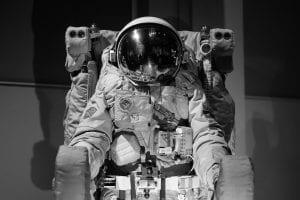
10. Peter Parker debuted in the 60s.
The comic book character of Spider-Man made his debut in the Amazing Fantasy #15.
The teenage superhero went on to become one of the most popular comic book characters of all time, having starred in at least eight feature films of his own at the time of writing.
11. The Fab Four emerged this decade, too.
The Beatles released their first single, “Love Me Do,” in the United Kingdom. The Beatles moved through the late 1960s as favourites of the ‘flower power’ generation.
Other teenagers preferred the music of the ‘Mods’ – ska music and The Who.
12. Music went portable for pop fans all over the world.
The audio cassette was invented, helping to make music more accessible and compact, eventually paving the way for the Sony Walkman.
Although the cassette would eventually be replaced by CDs and then streaming, tapes remain a somewhat popular, more nostalgic way to listen to music today!
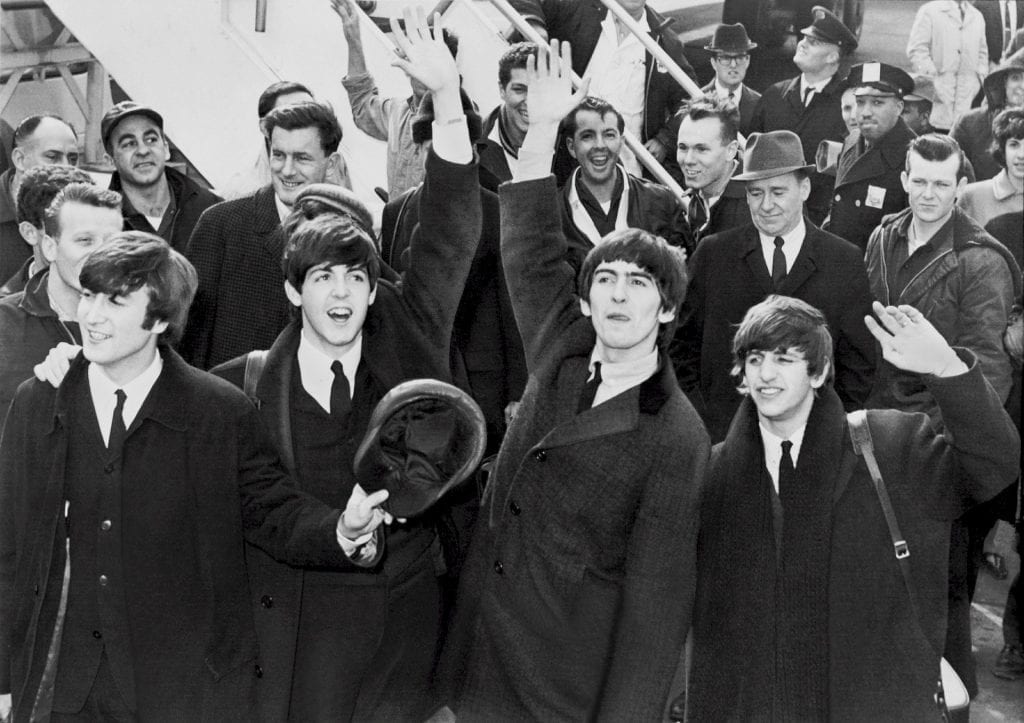
13. Further satellites launched to give us details on the universe beyond us.
The first geosynchronous communications satellite, Syncom 2, was launched. It was launched on July 26th, 1963, and began regular service on August 16th.
14. We were now able to record TV broadcasts.
Sony marketed the CV-2000, the first home videotape recorder. Eventually, ten models would be developed in the CV tape recorder series; the CV-2000, TCV-2010, TCV-2020, CV-2100, TCV-2110, TCV-2120, CV-2200, DV-2400, CV-2600, and the CV-5100.
And, of course, VHS tapes would be outdated by the mid-00s, with the rise of the DVD!
15. TVs were now the norm.
Most homes had televisions by the end of the decade. Some of the most popular TV shows from the 60s included The Man from Uncle, The Addams Family, Mission: Impossible, I Dream of Jeannie, and the Dark Knight himself, Batman (played at this time by the legendary Adam West)!

16. The longest-running soap opera of all time started at the head of the decade.
Coronation Street first aired in 1960. Believe it or not, the show, set in Manchester, England, is still running today! Its longest-serving actor, William Roache, continues to make occasional appearances as Ken Barlow, even into his 90s!
17. Live broadcasts started taking shape.
Live TV was becoming a very big deal indeed by the 1960s, with the Telstar satellite launching to deliver entertainment as it happened, trans-Atlantic, in 1962.
The first Telstar belonged to AT&T, and was part of an agreement including the company, Bell Telephone Labouratories, NASA, the Direction Générale des Télécommunications, and the GPO.
18. A long-running sci-fi staple also debuted this decade.
The BBC broadcast the very first episode of the iconic television show, Doctor Who, in 1963.
It is yet another British show that is still running today, at present starring Ncuti Gatwa as the world-famous time-traveling Doctor and their TARDIS.
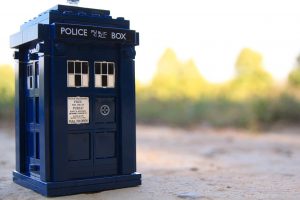
19. The BBC expanded its output.
BBC 2 went on air in 1964 – it was the first channel to have colour in 1967, and was the third-ever British TV station to launch.
Since then, the BBC launched two further stations, BBC Three and Four, and operate several specialist channels such as BBC News.
20. England won the World Cup in 1966.
Famously, England won the final of the soccer World Cup in 1966, beating West Germany in a nervous face-off.
At the time of writing, the side is yet to replicate this win. It’ll happen someday!
21. Grocery shopping changed forever thanks to the launch of Wal-Mart.
Sam Walton opened the first Wal-Mart store in Arkansas in July 1962.
As of 2023, there were a total of 10,623 Walmart retail stores operating worldwide!
22. Tragedy struck JFK.
US President John F. Kennedy was brutally assassinated by Lee Harvey Oswald in 1963 in a shooting that shook the world.
He was succeeded by Lyndon B. Johnson as President.
23. ZIP codes came into force.
The US began to use ZIP codes in the 1960s, in an attempt to help make mail delivery more precise. It’s similar to the post code system used in the UK, but on a broader scale.
Today, there are around 41,683 ZIP codes in the US!
24. Martin Luther King, Jr. made an iconic speech
The civil rights leader gave his famous “I Have a Dream” speech, where he laid out his dream for a world of equality and fairness.
The speech was officially delivered on August 28th, 1963 to around 250,000 people!
25. Yugoslavia underwent major political change.
Yugoslavia became a socialist federal republic, and President Josip Broz Tito was appointed as “President for Life.”
As the Socialist Federal Republic of Yugoslavia, each province had its own supreme court, parliament, President, and even its own constitution!
26. Civil rights were now part of the landscape.
US President Lyndon B. Johnson officially signed the Civil Rights Act of 1964 into law.
The Act brought significant changes to the nation, including making discrimination in public areas illegal, employment discrimination illegal, and implementing the integration of schools.
27. We saw space in photos for the first time.
NASA’s Mariner 4 space probe successfully approached Mars and became the first spacecraft to take images of a planet from deep space.
The spacecraft was launched into space on November 28th, 1964.
28. Sidney Poitier made significant movie history.
Sidney Poitier won the Academy Award for “Best Actor” becoming the first black actor to win that honour.
He won the Oscar for his role in the film Lilies of the Field.
29. The computer age was dawning.
The computer coding language BASIC (Beginner’s All-Purpose Symbolic Instruction Code) was introduced. Believe it or not, BASIC continues to be used around the world today!
30. Mustangs started rolling out.
The Ford Motor Company began to produce and sell the Ford Mustang.
Ford Mustangs are still made to this day. In fact, the 2024 Ford Mustang is called the Mach-E, an all-electric car!
31. However, there were plenty of other new wheels on the highway.
New cars of the ’60s included the Capri (1961), Consul Cortina (1963), and Ford Escort (1968), which replaced the Anglia.
32. Trains started becoming more efficient.
By 1966, we started using the first-ever intercity trains, helping people get from place to place much faster than before. Effectively outpacing diesel and steam, we now use trains running on electricity en masse. It’s cleaner and quieter, but there’s still a love for steam out there.
33. More rights came into force in the US.
The Voting Rights Act was signed into law by President Lyndon Johnson.
The Act, which was signed into federal legislation in 1965, made racial discrimination in voting completely illegal.
34. Dr King continued to inspire a movement.
Martin Luther King, Jr. led a peaceful civil rights march from Selma to Montgomery in Alabama. The march took place from March 21st to March 25th, 1965.
35. Mini-skirts led some of the biggest fashion trends of the 1960s.
Mary Quant designed the mini-skirt in London that became a major fashion craze almost overnight.
Some of the other biggest trends of the decade included bell-bottoms, tie-dye clothing, leopard print, and argyle socks.
36. Spacewalking became possible by the mid-60s.
Soviet Cosmonaut Aleksei Leonov became the first person to perform a spacewalk. He went for his space stroll on March 18th, 1965!
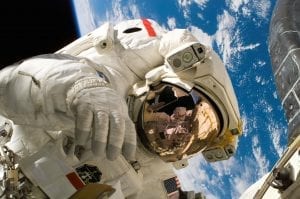
37. Protests stirred amid Vietnam woes.
The Vietnam War escalated, and opposition to it began to mount as anti-Vietnam protests became more common.
The opposition to the US’ involvement in the Vietnam War protests took place from January 28th, 1965, to March 29th, 1973.
38. Spacecrafts landed on the Moon only a short time before people did.
The Soviet Union’s Luna 9 unmanned spacecraft landed on the Moon on February 3rd, 1966.
Weighing a hefty 1,583 kg, Luna 9’s mission was pivotal in the space race, but only lasted just short of a week. It was the first spacecraft to land successfully on the Moon.
39. Star Trek made sci-fi history.
The first episode of the popular television show “Star Trek” aired. The popular show lasted for three seasons, and made history a few times, notably by showing the first black-white kiss on American television, on the episode Plato’s Stepchildren.
The franchise has since spawned multiple more TV shows and movie spin-offs, still airing today.
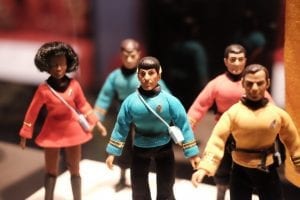
40. More African nations seceded from European ties.
Specifically, Botswana and Lesotho gained independence from England. Botswana had been under British rule for 80 years, and Lesotho had been for 82 years!
41. Indira Gandhi took charge.
Indira Gandhi became the Prime Minister of India. She served as prime minister for a second term until her assassination in 1984. In some ways, she was a controversial leader, with The Emergency of 1975-1977, where civil liberties were restricted, being a low point.
42. Canadian finances became more secure.
The Canada Pension Plan was in fact introduced in Canada. It was first introduced to the nation in April, 1965.
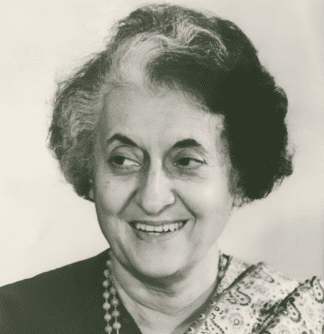
43. Rolling Stone magazine officially launched.
Rolling Stone published its first magazine issue in 1967, and featured Beatles legend, John Lennon, on the cover.
The magazine has gone on to cover more than just music, and is now a major online publication.
44. Football history was never quite the same.
The Green Bay Packers and the Kansas City Chiefs played against each other in the first Super Bowl, with the Packers winning 35 to 10.
45. Pioneering treatments rolled out.
South African doctor Christiaan Barnard completed the first heart transplant operation.
The operation took place on December 3rd, 1967, between accident victim Denise Darvall and organ recipient Louis Washkansky.
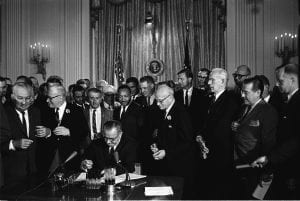
46. Big changes in US law continued to unfold.
The 25th Amendment to the US Constitution was ratified.
The Amendment clarified the procedures to follow should the President or Vice President of the US die, be removed, resign, or be incapacitated. Essentially, the new rules made it clear that the Vice President should take charge if the President dies.
These rules emerged following the shock assassination of JFK, and years on from Franklin D. Roosevelt dying in office.
47. Further civil landmarks emerged at the head of US law.
Thurgood Marshall was the first African American appointed to the Supreme Court.
He went on to win 29 of the 32 civil rights cases he fought for in front of the Supreme Court!
48. Tragically, more leaders fell to the bullet.
Civil Rights leader Martin Luther King Jr. was assassinated by James Earl Ray on April 4th, 1968.
However, his legacy lived on long past his death, and the changes he fought for were implemented and sustained.
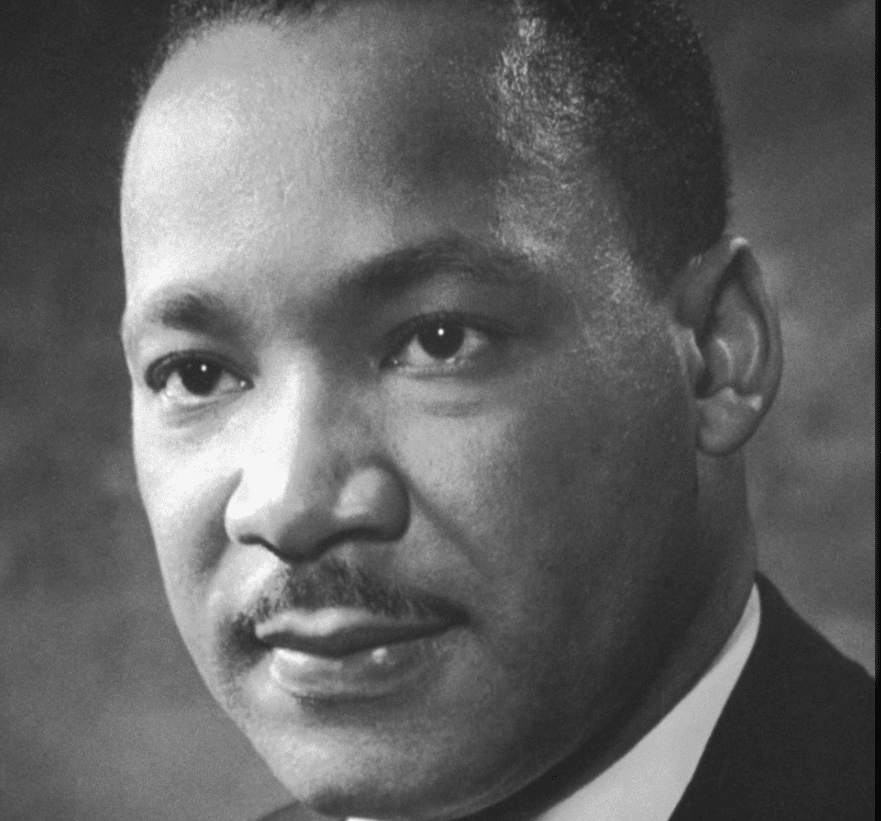
49. Technology was ramping up.
The first public demonstration of the computer mouse, video conferencing, teleconferencing, email, and hypertext happened in 1968.
Believe it or not, even the forerunner of the internet emerged in 1969, in the shape of Arpanet!
50. Nixon took charge of the US.
Richard Nixon won the US election and served as President of the United States of America from 1969 to 1974.
Nixon’s time in charge was controversial largely thanks to the Watergate scandal – more on that in the next fact file.
51. Of course – we finally made it to the Moon.
The first manned Apollo mission, Apollo 7, was launched by NASA. It was a trailblazer, of course, Apollo 11.
Neil Armstrong and Buzz Aldrin became the first men to arrive on the Moon during NASA’s Apollo 11 mission.
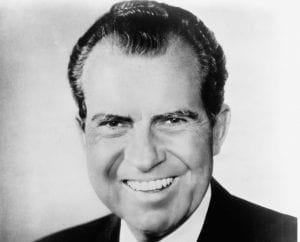
52. Woodstock changed the way people appreciated live music.
The Woodstock music festival took place in New York and featured such acts as Janis Joplin, Jimi Hendrix, Jefferson Aeroplane, and The Who.
53. A children’s TV staple debuted at the end of the decade.
The popular children’s television show, Sesame Street, first debuted on NET in 1969. It would move to PBS in 1970, and would start receiving global attention at the start of the 70s.
The forward-thinking puppet series has helped to bring a number of complex topics gently to children’s attention, covering issues such as mortality and homelessness. It’s been running for more than 54 seasons!
54. Big changes occurred in British law, too.
The United Kingdom finally abolished the death penalty in the mid-60s.
The last people to die under the death penalty in the UK were Gwynne Evans and Peter Allen in August 1964.

FAQs about the 1960s
What were the 1960s most known for?
The 1960s were famously marked by the Vietnam War, the rise of the Hippie movement, huge strides for civil rights, and a number of high-profile assassinations. However, it was also a period during which TV started becoming highly popular, with long-running shows such as Sesame Street, Star Trek, and Doctor Who debuting.
Why were the 60s called “Swinging?”
The Swinging 60s refers to emerging freedoms of the decade – it was during this time that people became freer from societal strangleholds and embraced new fashions, music, and culture. Civil rights wins, too, helped to make society more equal, though there was a long road ahead yet.
What was life like in the 1960s?
Life in the 1960s was both exciting and daunting. It was a period of great social empowerment, though the US faced political upheaval and war in the East. Technology and music continued to evolve, making entertainment more exciting, and people felt freer to enjoy a variety of things!
Do you know any fun facts about the 1960s? Share them in the comments below!
